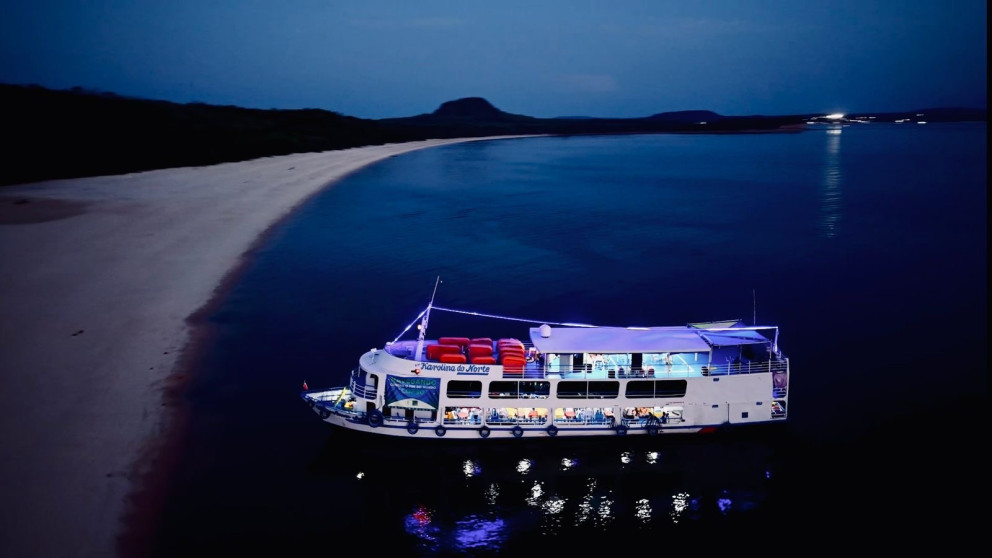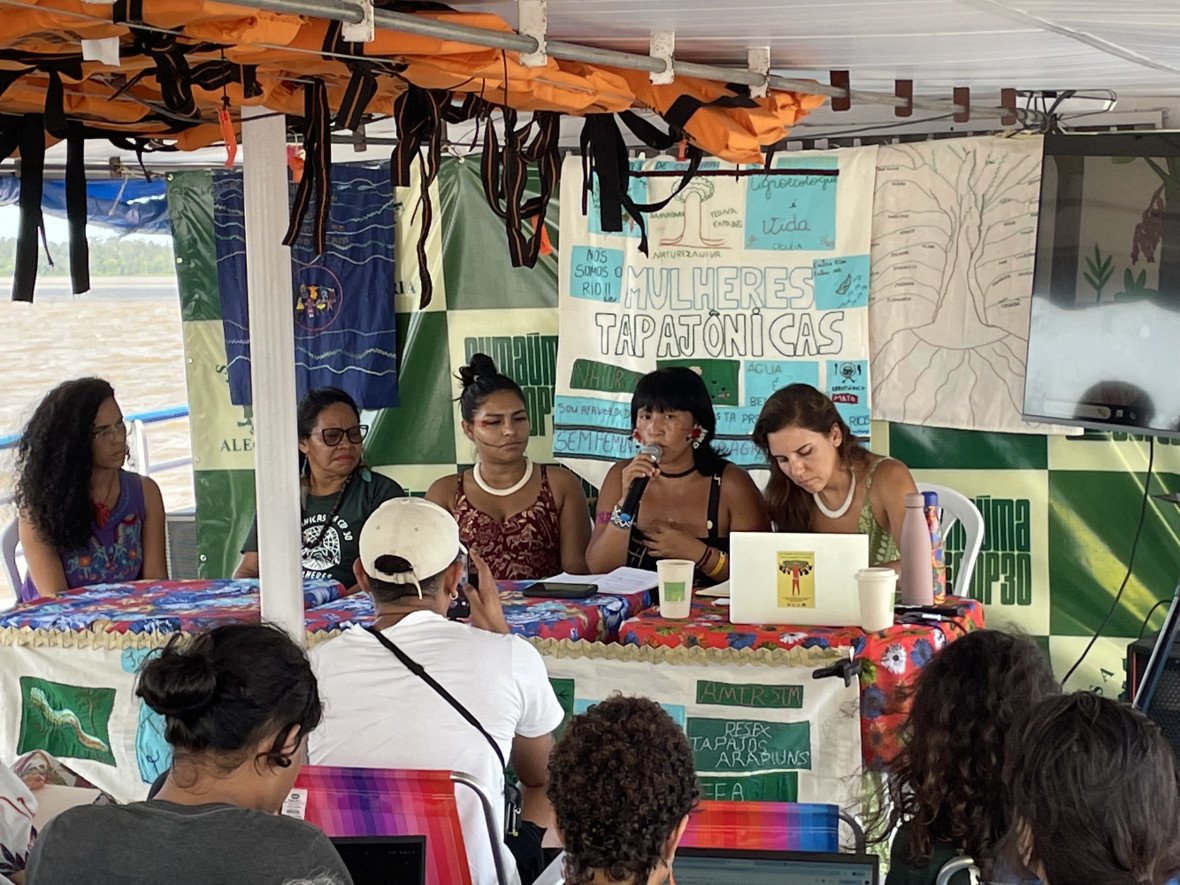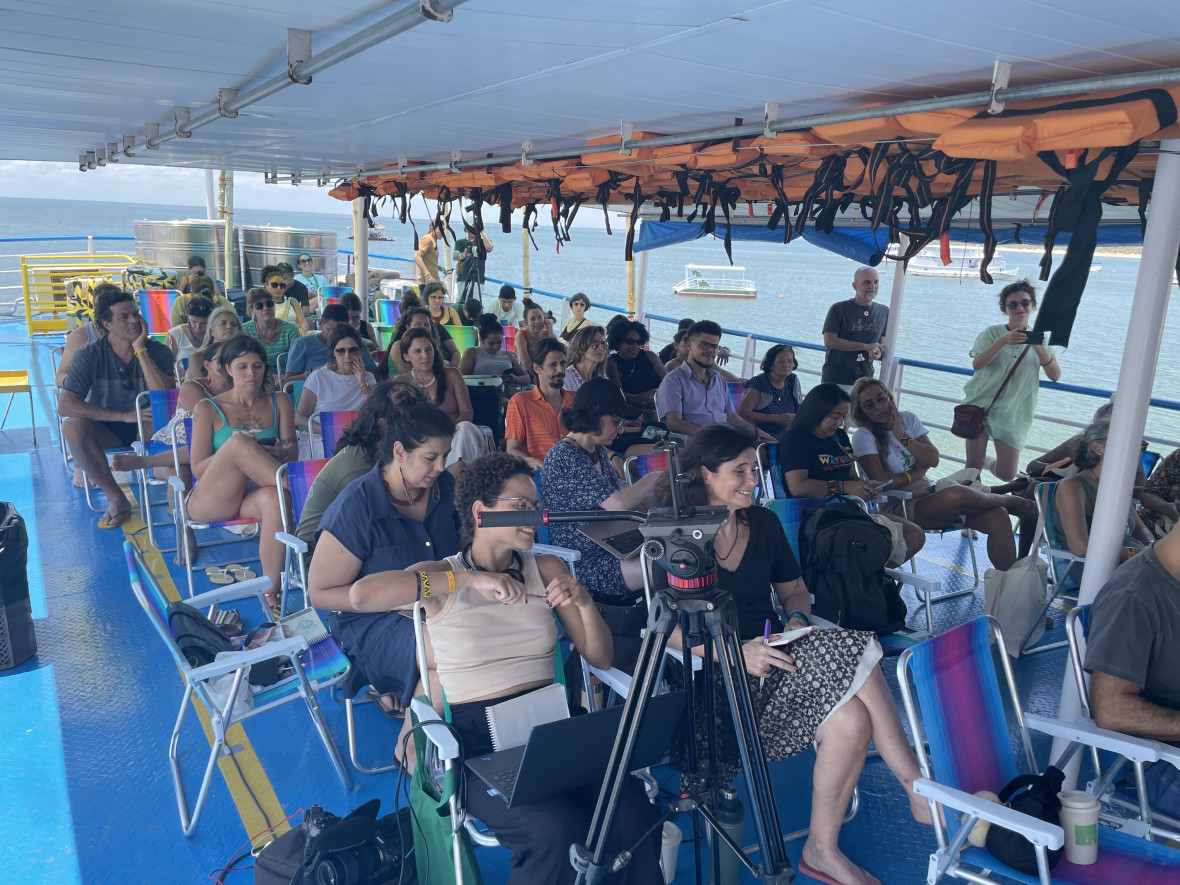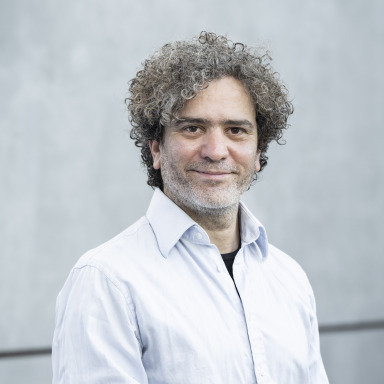Sailing Against the End of the World
11.11.2025

As COP30 approaches, the Amazon once again stands at the centre of global debates about climate change. Yet far from the negotiating tables and air-conditioned conference rooms, a different kind of summit unfolded aboard the Karolina do Norte, a wooden river-boat carrying scientists, activists, community leaders and artists through the arteries of the world’s largest rainforest. While drifting together on the river, they exchanged stories of knowledge, resistance, and imagination about the struggles in the Amazon region.
The boat has three decks: the lower deck houses the kitchen and cafeteria; the middle deck is the hammock hall, where we sleep; and the upper deck is the space for daytime talks and, at night, Amazonian carimbó concerts performed by local musicians. Our journey has been organised by the group Saúde & Alegria, which provides health services to riverside communities, and by Sumaúma, a forest journalism platform that reports from an Amazonian perspective.
Dozens of people from all walks of life are on board the vessel: mental health practitioners and activists, archaeologists, climate scientists, environmental lawyers, Indigenous and riverside community members, rural workers’ union leaders, journalists, filmmakers, people from across Brazil, South America, and Europe — and even a famous former Brazilian footballer and social activist.
Some of the passengers live on the frontlines of the climate crisis, confronting the impacts of mega-infrastructure projects on communities and the environment, violence against Indigenous communities, the lack of legal protection and other threats. Our voyage began in the village of Alter do Chão, a short distance from Cargill’s port in Santarém, a city that encapsulates the challenges facing the Amazon and other tele-connected tipping elements.

Cargill, the largest privately held company in the United States, trades, produces, and distributes agricultural commodities, food, energy and steel and provides transport, and financial services around the world. Its Santarém terminal opened in April 2003 and was expanded in 2018, raising its handling capacity from roughly 2 million to nearly 4.9 million tonnes of bulk grain per year. Soy and corn are transported by barge or truck from Miritituba (PA) and Porto Velho (RO) along the Tapajós–Amazon river system to Santarém, where ocean-going vessels carry the cargo to markets in Europe and Asia. In September 2025, Cargill moved a record 110,971 tonnes of corn in a single barge convoy from Miritituba to Santarém via the Tapajós.
The Santarém terminal has accelerated soy expansion in the Amazon’s “soy frontier,” especially along the BR-163 corridor, driving deforestation in formerly forested and smallholder areas of western Pará. Forests and secondary vegetation have been cleared for large-scale monocultures of soy and corn, replacing diversified smallholder agriculture and forest-based livelihoods. Habitat fragmentation and pesticide use threaten terrestrial and aquatic species, including those of the Tapajós and Amazon river systems. Runoff from fertilisers and agro-chemicals contaminates streams and groundwater, while sedimentation from forest clearing disrupts river ecosystems. Bee populations have collapsed, leading to an immeasurable loss of biodiversity. Dust, grain residues, and heavy port traffic contribute to respiratory and noise problems for nearby residents. Deforestation and river transport linked to agribusiness increase carbon emissions, destroy local livelihoods and widen global inequality.

Beyond the evident environmental destruction, social conflicts have deepened with the Amazon’s integration into global capital circuits. Rising soy land values have fuelled land grabbing and rural displacement, forcing small farmers and traditional communities — riverside populations, Afro-descendant groups, and Indigenous peoples — off their lands. Fishing, small-scale agriculture, and forest extractivism have declined as industrial agriculture and port logistics dominate the local economy.
Driven by agribusiness logistics, Santarém’s rapid growth has brought housing pressure, precarious labour conditions, and strained infrastructure. For example, the Ferrogrão railway project, which aims to bring soy and corn from inland to global markets via the Atlantic Ocean, will likely cause a massive increase in river traffic, amounting to a de‑facto privatisation of the Amazon River Basin, with ferries crossing every three minutes.
As land and resources are diverted to export crops, local food production dwindles, deepening dependence on imported and processed foods. The expansion of agribusiness reshapes rural identities, weakens community cohesion, and erodes local governance rooted in riverine and forest cultures. Agribusiness interests increasingly influence local policy and planning, often side-lining community voices in decision-making processes.
In short, the problems overlap and reinforce one another — a familiar pattern in the climate emergency. This was one of the journey’s key takeaways.

Headlined Sailing against the end of the world, the boat’s programme combines art, activism, science, and storytelling in a powerful voyage from Alter do Chão to Belém ahead of COP30. Panels featured frontline voices such as Raimunda Gomes, Bel Juruna, and Thais Santi on the collapse of the Belo Monte hydroelectric dam, and Juma Xipaia and Ehuana Yanomami on women’s leadership and Indigenous resistance. Other highlights included climate scientist-activist Antônio Nobre’s reflections on planetary life, a screening of The Falling Sky (inspired by Davi Kopenawa’s book), and a conversation with archaeologist Eduardo Neves on ancient Amazonian urbanism. Throughout, music, rituals, and collective reflection wove together diverse ways of knowing and imagining ecological present times from the heart of the forest.
There could not have been a more inspiring preparation for COP30. As UN Secretary-General António Guterres warns that “a temporary overshoot above 1.5°C is now inevitable,” the coalition forged on this journey felt like a microcosm of what is needed on a planetary scale. For once, we were all on the same boat — literally and metaphorically.

